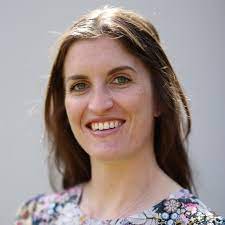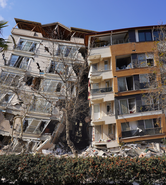Before last year, when envisioning a potential earthquake in Turkey, many would automatically think of something similar to the 1999 İzmit earthquake, an event on the North Anatolian Fault Zone directly striking Istanbul.
However, on February 6, 2023, it was a series of events on the East Anatolian Fault Zone in south-eastern Turkey that made the headlines.
The Kahramanmaraş Earthquake Sequence resulted in over 50,000 fatalities and affected around 13 million people across Turkey and Syria.
The sequence consisted of two mainshocks: the M7.8 Kahramanmaraş event – the joint largest earthquake in Turkey’s recorded history, and the M7.5 Ekinözu event, which struck just nine hours later. The second shock had an epicenter of less than 100 kilometers (62 miles) from the first shock.
Not only were these two earthquakes significant in terms of magnitude, but their proximity in both space and time compounded the damage and devastation in the region with many areas impacted by both events.
Largest Global Loss Outside of the U.S. in 2023
The Kahramanmaraş Earthquake Sequence severely damaged or destroyed over 200,000 houses in total. It is estimated to have caused insured losses of over US$6 billion, with recent media articles reporting that the sequence represented the biggest insured natural catastrophe loss outside of the U.S. in 2023.
Total insured losses in 2023 for events outside of the U.S. where losses were greater than US$1 billion reached US$16.7 billion, and over a third of these losses came from earthquakes in Turkey.
The insured loss from the sequence is significant, and a sizeable portion will be passed on to the Turkish Catastrophe Insurance Pool (TCIP) and the global reinsurance market.
However, the estimates are considerably larger for the total economic loss. Despite the compulsory TCIP cover in Turkey, insurance penetration in the affected area hovers around 50 percent.
In addition, for some with TCIP insurance, the events highlighted the extent of underinsurance; policyholders underestimated the floor area to reduce their premiums – thus introducing a protection gap for some of those considered to be insured.
As a result, the Turkish authorities are now striving to increase and expand future TCIP cover. It is of fundamental importance that this expansion is realized as soon as possible given the very real threat of an earthquake hitting Istanbul.
Admittedly, this is easier said than done. A challenging economic backdrop in Turkey – including significant inflation and a cost of living crisis, together with a reinsurance renewal that resulted in higher reinsurance pricing following the earthquakes, squeezing affordability.
Future Modeling Advances
Events of this scale are fortunately infrequent. But from a modeling perspective, this infrequency means that for the most severe earthquakes, modelers lack data and insights for events that are arguably the most important from an insurance perspective.
So, when large events occur, the wealth of data and insights they generate can be used by risk modelers to inform our earthquake models, and with more data, we can advance and tailor the science in our models to more localized solutions.
Following the Kahramanmaraş Earthquake Sequence, national and global communities have expended an enormous amount of effort in an attempt to dissect and understand the events, and findings are already widely being published in scientific journals.
The investigations are ongoing due to the complexity of the earthquakes, and at Moody’s RMS we strive to include learnings in our modeling while being conscious that models need to balance the intricacies of the events with the need to provide a useful and practical tool for the insurance market.
Such modeling efforts are time-consuming and require all data to be available to truly reflect the nature of the risk, but already we have gained important insights from the earthquake sequence for use across all model components that we will use to inform our future model.
The sequence underlined the need to understand the risk from complex ruptures, and the role of time dependence and clustering where earthquakes trigger subsequent events in nearby space and time. We now need to include these types of ruptures for Turkey as we do for other modeled regions.
For the two largest earthquakes, we have processed around 500 strong motion station recordings from the Turkish National Strong Motion Network (AFAD). These data points will be used to inform and validate the latest ground motion and site amplification models.
Hazard and the consequent loss results from catastrophe models are particularly sensitive to the specific ground motion and site response models used. Therefore, it is fundamental that the most appropriate models are employed for Turkey.
From these recordings, we observed ground motion amplification due to the presence of sedimentary basins and local soils, including the potential for liquefaction. As such, it is important to reassess data on the local site conditions.
The sequence also provided a wealth of data regarding building damage. Despite the comprehensive regulations and building codes that currently apply in Turkey, some of the buildings that collapsed were constructed within the last year.
Regulations were not always followed in the affected area due to widespread building regulation amnesties, with many buildings lacking resistance to intense shaking. In some cases, however, the ground shaking exceeded the building design code.
This raises three questions that we need to understand to suitably model the vulnerability of the building stock in Turkey:
- First, how will Turkey rebuild in the damaged areas?
- Second, how extensive are the building amnesties across the rest of the country?
- Finally, what can be done to address the true vulnerability of the nation’s building stock?
These are non-trivial questions, all questions that the country is now rapidly facing with the ever-present threat of ‘the’ Istanbul earthquake. Note, that the aftermath of a damaging earthquake in the Istanbul metropolitan area would result in a very different socioeconomic outcome, and such an event would also put a spotlight on how the region was rebuilt after the 1999 İzmit earthquake.
Working Together to Build Better Models
As the Sequence unfolded, Moody’s RMS Event Response team regularly updated the industry, and where available at the time they used the data discussed above to present our findings in a client webinar.
Of course, while the data from the 2023 Kahramanmaraş Sequence is hugely valuable from an individual component perspective, it is insurance claims data that helps us validate the losses from our models.
We, therefore, invite the insurance market to collaborate with us on our journey to update our Turkey Earthquake Model as part of revamping the entire Moody’s RMS Europe Earthquake model.
In doing so, we can not only provide a tool that best reflects the latest understanding of earthquake risk in Turkey but also one that has been built in partnership with the local and global insurance markets. Hence, Moody’s RMS is connecting with experts from the Natural Disaster Insurance Institution (DASK, TCIP) to answer key questions across the model components and insurance industry.
In addition, we are engaging with the Global Earthquake Model (GEM), the European Facility for Earthquake Hazard and Risk (EFEHR), and their partners to include the latest risk-relevant science.
The destructive nature of the Kahramanmaraş Earthquake Sequence is such that data continues to unfold, as does the sequence itself, with aftershocks continuing – and will do so for some time.
Moody’s RMS will endeavor to capture this data, and the many insights gained, for use in the future Europe Earthquake HD Models.
On Thursday, February 15, 2024, we held a webinar entitled "One Year On: The Kahramanmaraş Earthquake Sequence"
The webinar provided a review of the events, the lessons learned from a risk modeling perspective, and how new data and insights will help in our plans for updating Moody's RMS Europe Earthquake Model.
The webinar is available as an on-demand video recording. You are welcome to register to view the recording, for an insightful look-back at this pivotal event.
Click here to find out more about the webinar and register to access the video recording.







